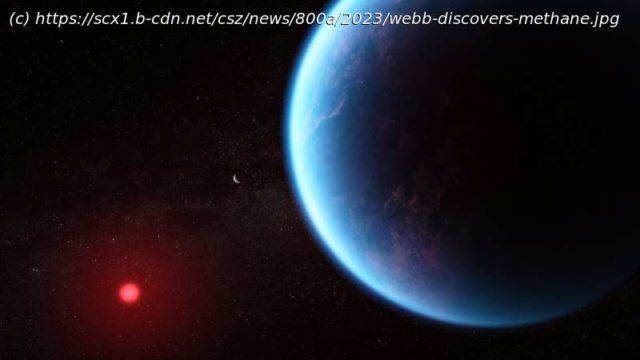Carbon-bearing molecules have been discovered in the atmosphere of the habitable zone exoplanet K2-18 b by an international team of astronomers using data from the NASA’s James Webb Space Telescope. These results are consistent with an exoplanet that may contain ocean-covered surface underneath a hydrogen-rich atmosphere. This discovery provides a fascinating glimpse into a planet unlike anything else in our solar system, and raises interesting prospects about potentially habitable worlds elsewhere in the universe.
Carbon-bearing molecules have been discovered in the atmosphere of the habitable zone exoplanet K2-18 b by an international team of astronomers using data from the NASA’s James Webb Space Telescope. These results are consistent with an exoplanet that may contain ocean-covered surface underneath a hydrogen-rich atmosphere. This discovery provides a fascinating glimpse into a planet unlike anything else in our solar system, and raises interesting prospects about potentially habitable worlds elsewhere in the universe.
A new investigation with NASA’s James Webb Space Telescope into K2-18 b, an exoplanet 8.6 times as massive as Earth, has revealed the presence of carbon-bearing molecules including methane and carbon dioxide. Webb’s discovery adds to recent studies suggesting that K2-18 b could be a Hycean exoplanet, one which has the potential to possess a hydrogen-rich atmosphere and a water ocean-covered surface.
The first insight into the atmospheric properties of this habitable-zone exoplanet came from observations with NASA’s Hubble Space Telescope, which prompted further studies that have since changed our understanding of the system.
K2-18 b orbits the cool dwarf star K2-18 in the habitable zone and lies 120 light-years from Earth in the constellation Leo. Exoplanets such as K2-18 b, which have sizes between those of Earth and Neptune, are unlike anything in our solar system. This lack of equivalent nearby planets means that these ‘sub-Neptunes’ are poorly understood, and the nature of their atmospheres is a matter of active debate among astronomers.
The suggestion that the sub-Neptune K2-18 b could be a Hycean exoplanet is intriguing, as some astronomers believe that these worlds are promising environments to search for evidence for life on exoplanets.






